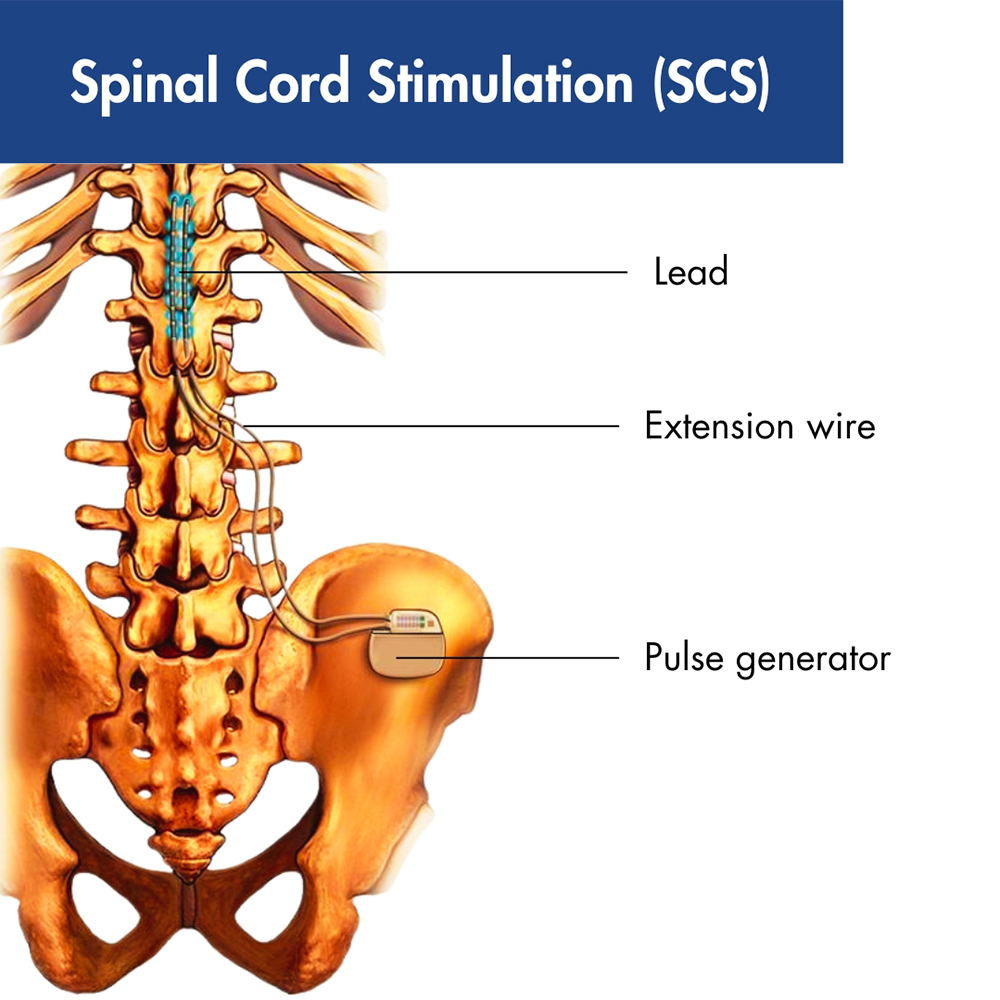We’re pleased to announce that Pain Physicians of Wisconsin is now Pro Spine Pain.
We’re pleased to announce that Pain Physicians of Wisconsin is now Pro Spine Pain.
SCS is a branch of neuromodulation. It is a minimally invasive procedure that involves positioning electrodes on the spinal cord to control and manage pain signals.
Spinal cord stimulation is a two-stage process. The effect of spinal cord stimulation and the level of pain relief varies from patient to patient. Hence, it is important to check how your pain responds to SCS before your doctor implants the device permanently.
First, the spinal cord stimulator is implanted on a trial basis to test its suitability for the patient. A trial phase is necessary since all patients have different conditions and different levels of pain. The stimulation may be unsuitable for a specific patient and suitable for others. A trial period is usually a week, but it may be less or more, depending on the condition. This is enough time to evaluate its effectiveness both when you rest and while active.
In this phase, your doctor will implant the device permanently after the trial period is over. Your doctor will perform the permanent implantation only if the patient has experienced a reduction in pain by at least 50% during the trial period. Your doctor will implant a device around the size of a watch face under the skin. It is implanted either in the upper buttock or abdominal area.
Furthermore, spinal cord stimulation can be an ideal treatment plan when medications and other pain-relieving therapies fail to dispel pain symptoms. Your doctor will recommend this treatment if you experience:
Spinal cord stimulation is performed after giving controlled anesthesia to the patient while they are conscious. The patient is usually awake during the procedure. It helps to test the electrodes and to know they are in the right place.
The patient can go home once the procedure is finished and the programming is complete.
 Most of the time, spinal cord stimulation therapy is often advised if conservative treatment options have not worked. On the contrary, if you’re pregnant or have a pacemaker, you may not be eligible for this treatment.
Most of the time, spinal cord stimulation therapy is often advised if conservative treatment options have not worked. On the contrary, if you’re pregnant or have a pacemaker, you may not be eligible for this treatment.
However, if you have any of the following conditions, there’s a chance you could be referred for spinal cord stimulator surgery:
If you have any of these conditions, book a consultation to see us. With five centrally located clinics in Wisconsin, our pain management specialists will connect you to transformative treatments for your spine.
With spinal cord stimulation therapy, there are three main types you could potentially undergo based on your condition and symptoms. All surgeries differ by offering a different lifespan of the device and stimulation intensity.
Based on what you’re referred for, you could have a:
At Pro Spine & Pain, our board-registered pain management specialists are some of the most highly qualified and adept in Wisconsin. Before suggesting a spinal cord stimulator, they’ll use a collaborative approach where they’ll discuss your conditions and symptoms and review your medical history. If needed, they’ll refer you for advanced diagnostic imaging to ensure you qualify for a spinal cord stimulator.
After the anesthesia has worn off, you’ll be discharged and allowed to return home the same day.
The incision should take around 2-4 weeks to heal, and you’ll be provided detailed close instructions to follow, such as:
Spinal cord stimulators are an effective surgery if other conservative treatments for chronic pain have been unsuccessful.
Every type of spinal cord stimulator can be removed and renewed to be replaced when it stops sending impulses.
On average, conventional spinal cord stimulators can last 3-5 years, whereas rechargeable ones last between 10-15 years. However, it depends on your condition, intensity of stimulation, and lifestyle.